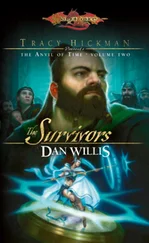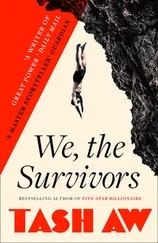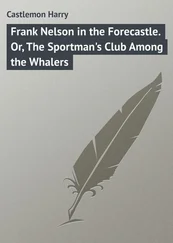Jaimie glanced back at her once, then pointedly ignored her once again.
Tess rubbed her hands in the Australian shepherd’s luxurious coat. “Good Bandit,” she said. “Nice Bandit.” Jaimie Wolfe’s boy dog. Tess reached down and around the dog’s tummy. Slid her hands back, reveling in the soft, luxurious fur. Reached down and between the dog’s legs. She was gentle but thorough. “Good boy,” she said.
Jaimie glanced her way.
“Good boy !” But by that time, Tess knew Bandit wasn’t a boy at all.
It wasn’t even Bandit.

Back at the sheriff’s office, Tess pulled Jaimie Wolfe’s DL and put together a photo lineup. She chose five other women of approximately the same age and body type. All of them were photos from driver’s licenses. Then she took off for Animal Control and found Sally, the woman who had processed the dog’s adoption.
“Do you recognize any of these women?” Tess asked.
Sally pointed to the photograph of Jaimie. “That one. She was the one who adopted the dog you were asking about.”
“You’re sure?”
“I can look it up. But I’m sure. I remember, because I really like her hair.”
Yes, Jaimie Wolfe had glorious hair.
In the car, Tess had the SABEL list printout. One of the members of SABEL was a woman named Bernadette Colvin—the woman who supposedly adopted George Hanley’s dog, Adele.
Tess drove to her townhome and rang the bell.
It was the same as last time. The street was empty. The blinds pulled in the window. The garage door closed.
Tess was about to get back into her Tahoe when a car drove up the street and parked across the way. She hailed the woman when she got out.
“Do you know the woman who lives here?” she asked. “Bernadette Colvin?”
The woman saw her badge and her brow knitted. “Something wrong? I thought she was already gone.”
“Gone?”
“She’s in assisted living. Her family is putting the house up for sale.”
Tess said, “Do you know how I can contact her?”
“Her daughter used to come by here with her kids,” the woman said. “To see their grandma. But I honestly don’t know how you’d get in touch with her.”
“Anything you can tell me about her family?”
The woman thought for a minute. “One time they came over and the little girls were dressed to go riding.”
“Riding?”
“Boots, breeches. Like you see in the Olympics.”

The DeKoven family:
Tess started with what she knew: Michael was a financial advisor whose office was at the top of the highest building in the city. Jaimie was divorced and ran a riding school. The youngest, Brayden, was divorced with a little girl. She practiced real estate law and had put up her shingle at her home in Tucson. And the second youngest, Chad, lived in Laguna Beach, California.
Tess spent some time looking for and accessing a Tucson Lifestyle article on the DeKoven family from a couple of years ago. There had been stunning photographs of the ancestral home—Zinderneuf—named by the great-great-grandfather after the doomed fortress in P. C. Wren’s epic novel, Beau Geste . The house was Moorish, built in the 1940s at the height of the architectural style’s popularity, on a bench of land overlooking the Rincon Valley not far from the old and now-defunct Rita Ranch. Michael and his wife and two children lived there.
The article profiled the family in all its glory: the four heirs to the DeKoven dynasty.
Instead of bored kids standing out in the sun for a ribbon-cutting ceremony, these were polished adults, posing for the beautifully orchestrated family photo. Inside the exquisite Moorish house, the light from the picture window filtered in, catching them perfectly coifed and handsome.
A beautiful family, the DeKovens.
Tess’s gaze fell on Jaimie. Why would Jaimie take George Hanley’s dog and pass her off as one of her own?
The woman smiled vacuously into the camera.
Tess knew Jaimie enjoyed the game. And it was a game. She’d bird-dogged her own brother, sending Tess his way by telling her Michael was George Hanley’s financial advisor, when in fact he wasn’t. Tess got the feeling that Jaimie enjoyed playing people one against the other.
Tess found a few newspaper articles and accessed public records as she tried to put together a picture of the family.
The history of the DeKoven family was similar to other cattle baron/mining magnate/politicians who made a fortune in the state in the early part of the twentieth century: wrangling over land, water and mineral rights, Apache attacks (back in the 1890s), and various ventures in the new era, including aviation and moving pictures. The story was always colorful and sometimes heartbreaking, like the time DeKoven’s great-grandfather lost his daughter when she played in a creek during a thunderstorm and was swept away.
A couple of incidents were dramatic. Quentin DeKoven, Michael’s father, was the lone survivor of a small single-engine plane crash in northern Arizona. After dragging the dying pilot nearly three miles though rugged country and spending the night in frigid temperatures, DeKoven was found by the search team, nearly dead from exposure.
He subsequently lost two fingers on one hand and a foot to frostbite.
Tess read between the lines. Despite his heroism, Quentin DeKoven was not a nice man. He steamrolled over congressmen and governors, mowing down his opposition with money and lies. His businesses flourished. His business practices rode roughshod over the competition. He ran for governor and lost.
He and his wife, Eloise, had five children. The eldest, Quentin Jr., died at ten in a freak accident—a baseball hit him in the head during a Little League game.
According to the magazine, life was never the same again in the DeKoven household.
Zinderneuf was a beautiful place—but it was also an unhappy one. After Quentin Jr.’s death, Eloise rarely went out in public and wrote bitter letters to the editor of the local newspaper—screeds. Mostly about politics, but her vitriol regarding just about every subject, no matter how insignificant, was legendary.
She died at a relatively young age—she’d been ill.
Quentin DeKoven died ten years later almost to the day, when his private plane abruptly lost altitude and crashed into a wilderness area in the Pinaleño Mountains. The ensuing fire consumed a couple hundred acres of pristine forest.
Tess called Cheryl Tedesco at TPD. “Have you interviewed Michael DeKoven yet?”
“I’m doing it later today.”
“You mind if I come along as an observer?”
“Can you get here in an hour?”
“Make it an hour and twenty minutes, and I’m there.”
“See you then.”

Tess took I-19 to I-10, amazed as usual at the sprawl. Tan-colored houses spread like a circuit board across the desert valley. She’d been to Vail a few years ago, and was surprised by the change in the area. Once Vail had been a collection of old buildings and a beautiful Catholic church in a rural area. Now it was a sprawling outlet-mall-slash-fast-food jungle. She spotted Cheryl Tedesco’s car at a pull-out just off the freeway. Cheryl flashed her lights and pulled out onto Colossal Cave Road. Tess followed.
By the time they reached Old Spanish Trail, the jillions of Monopoly houses had disappeared in favor of more expensive homes on larger lots, and finally to open land. Tess glanced at the wrinkled flanks of the Rincon Mountains, still pristine for the most part, especially the higher you looked. The road curved and dipped in and out of a mesquite bosque. Now they were in ranch country. There was a sprinkle of expensive new homes in the foothills—Thunderhead Ranch. On the right a dirt road headed up into the wilderness. Cheryl turned onto the dirt road.
Читать дальше













